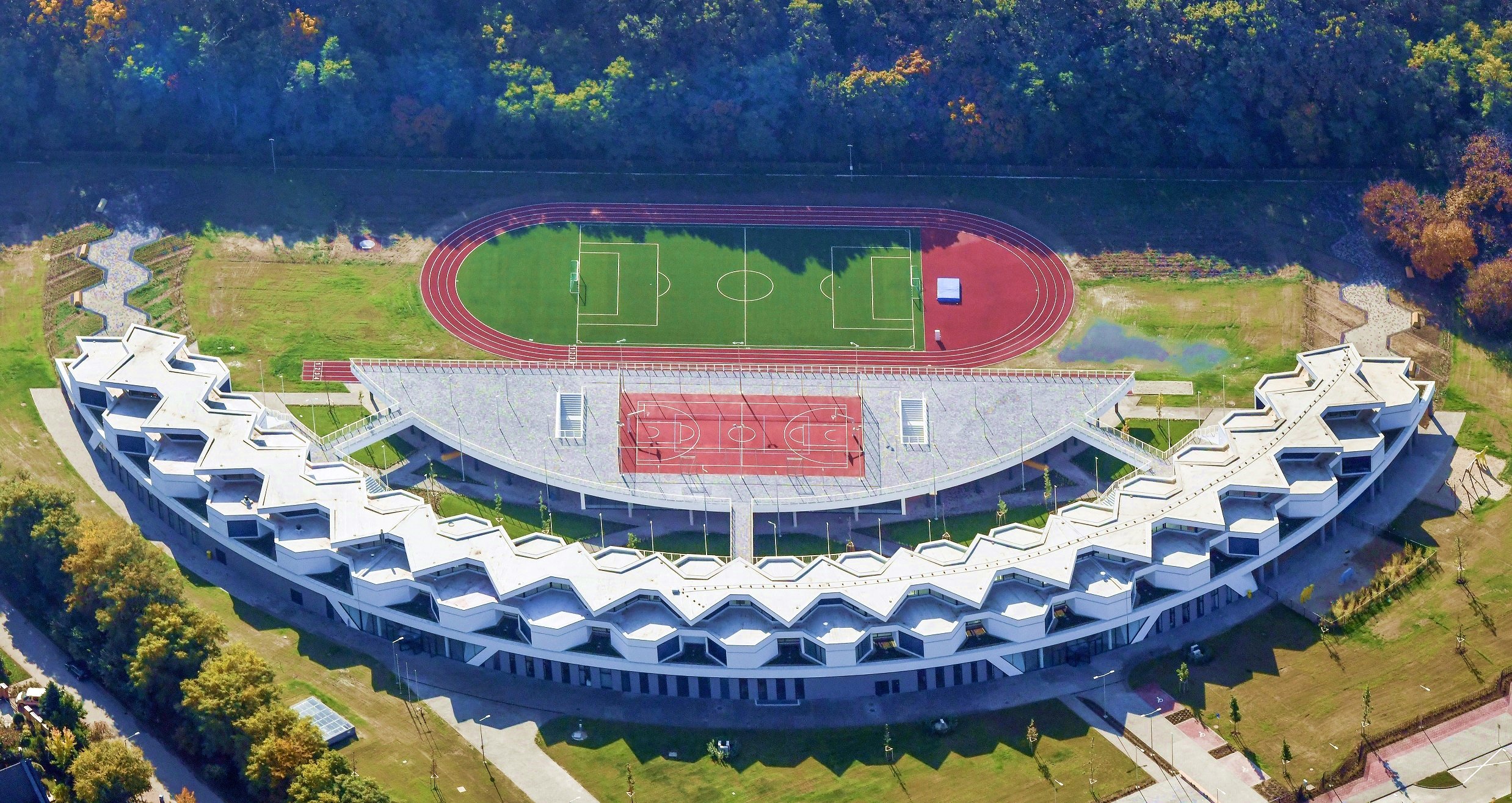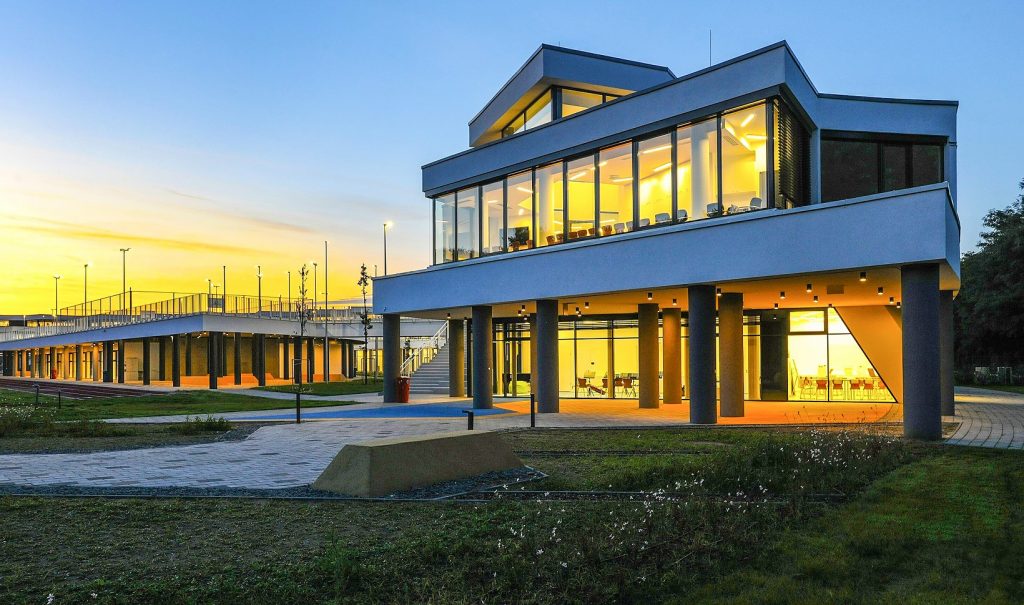HUNÉP, CELEBRATING ITS 30TH BIRTHDAY THIS YEAR, WAS RECOGNIZED BY THE PROFESSION WITH ANOTHER EXCELLENCE AWARD
- 2021-07-09

Hunép Zrt. is celebrating the 30th anniversary of its foundation this year, and to our great pleasure, we have recently received the Construction Industry Excellence Award as the best general contractor for the 10th time, this time for the construction of the Debrecen International School.
The institution, located in Debrecen-Pallag not only works in an innovative way in its educational activities, but the building itself is also quite unique, and Hunép Zrt. has played an outstanding role in its implementation. The architectural and execution plans of the school were made by BORD Építész Stúdió Kft. on commission by the Municipality of Debrecen, and the construction contract was awarded to HUNÉP. The aim was to create a uniform building complex suitable for satisfying the needs of international education from kindergarten to the end of secondary school, which embodies the innovative approach that it also represents in its educational method. The special feature of the building’s configuration is that as time passes, students move between units within the building and eventually complete their studies on the other side.
The architectural design, arranged in a semi-circle, required very special solutions. The building materials installed are tasteful, yet unpretentious, long-lasting, well-manageable, and easy to maintain, repair or repair. The classrooms that are also well-conceived acoustically and illuminated by natural light, are adjacent to each other like cells of a honeycomb: they are open toward each other and are transparent, but they also provide the opportunity for teaching in smaller groups independently. With its state-of-the-art facilities, aimed at developing creativity, including its sports facilities, the school building is a forward-looking example of high-quality education.

Work at an amazing pace
The construction site was taken over by HUNÉP Zrt. in June 2018, and the project required special attention and immense organisation efforts throughout. The floor space of 7,200 m² and the special architectural solutions posed an extraordinary challenge. The basketball court “floating” above the terrain level, the gym sunk halfway into the ground, the articulated façade, the huge landscaped and partially paved school yard all required significant professional competence, confident decisions and precise work.
The construction started with the demolition of old buildings on the site, and within 13 months the occupation permit was issued for the building. Due to the very tight deadline, HUNÉP Zrt. implemented the project by pushing its own boundaries.
“This project has proved that everything can be achieved with due dedication,” said János Zsiros, project manager. Traditional technologies were used, but in many cases in non-traditional locations. For example, in some places, floor carpets were installed on the walls or EPDM rubber coverings on concrete floors as well. The project required special attention and measures, and the building was prepared in full compliance with the legal requirements and standards applicable to educational institutions. With its shape and style, the building uses state-of-the-art solutions inside and out represents unity, in which all spaces are open, yet divided into parts, as well as reflecting international trends and ways of thinking. The flexibility, spaciousness and transparency of the interiors ensures the high quality implementation of the pedagogical program.
The construction of the Debrecen International School was a large-scale, innovative challenge for the 30-year-old HUNÉP Zrt. The outstanding success of the project – now also recognised by the profession – proved that our company has not become too comfortable with its three decades of experience, and in fact it is always able to renew itself and successfully raise the bar even higher. As a result, a new extraordinary facility could be implemented by the tight deadline, exactly as planned, which will contribute to the development of the future generation, with the belief and hope that the successful architectural professionals of the future will also study in these classrooms.
Edited by Orsolya Gál
